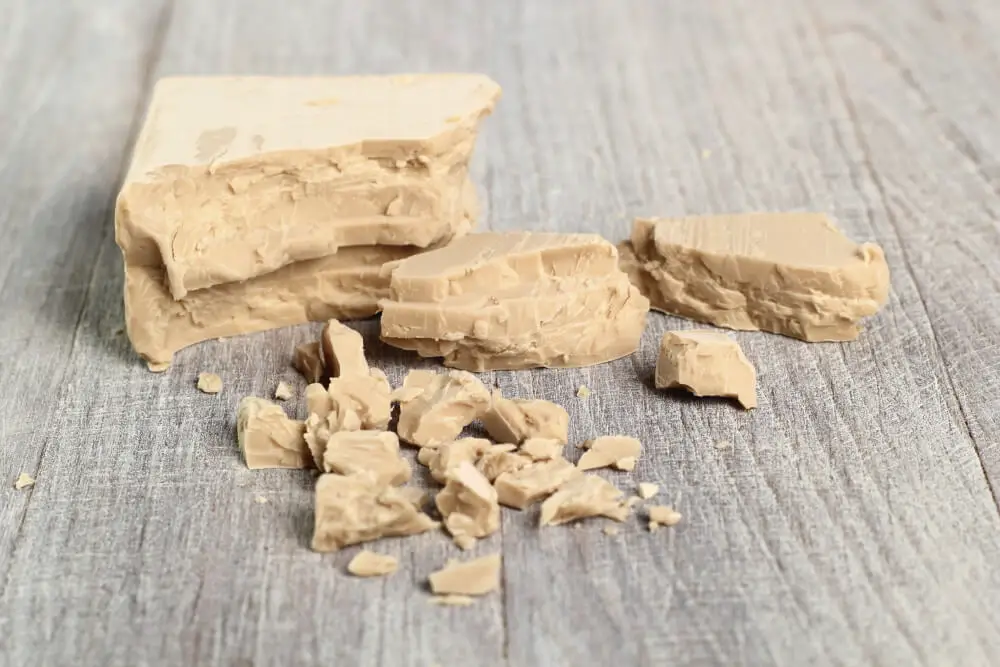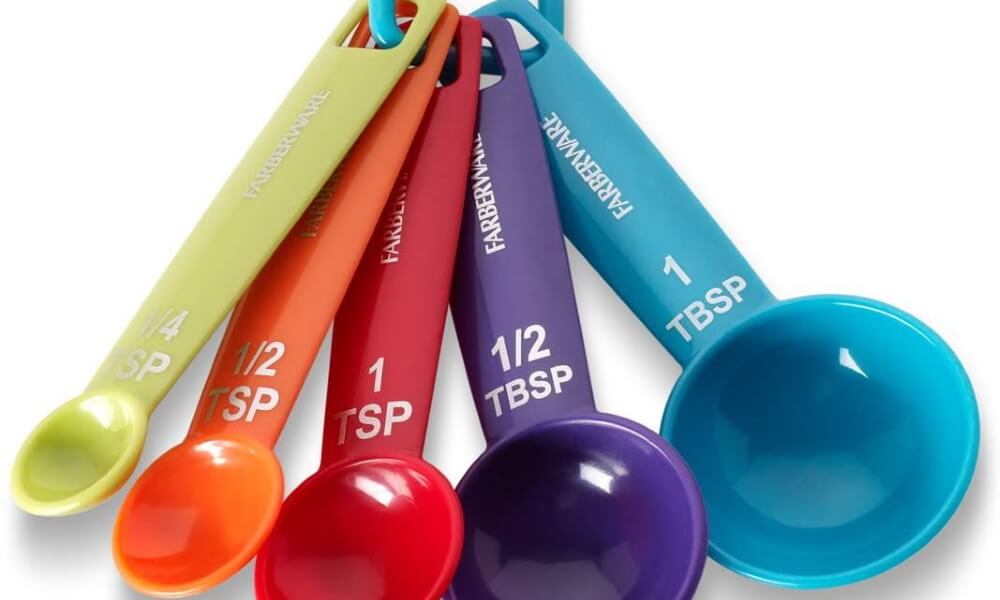How much yeast is in a packet? If you enjoy baking pastry and prefer own bread, then you know a thing or two about yeast. Those unfamiliar with doughs that require yeast may be confused by the nature of the seemingly complex ingredient.
Until the 1970s, only fresh yeast was used in breadmaking, in other words, live colonies of yeast in the form of pressed briquettes or “yeast milk” (water suspension). Today, the so-called dry, fast or instant yeasts are also in use. First of all, they are less prone to diseases, which is very important for baking on an industrial scale, one introduced virus can mow down a live yeast colony and stop the production of an entire bakery for a while. And secondly, they rapidly accelerate the process of raising the dough, are responsible for the formation of a porous crumb.

What Is the Nature of Yeast?
Yeast is a single cell organism, more precisely it is a fungus that is used as an ingredient in baking. This helps the dough rise by fermenting processes that go on after adding this ingredient. Yeast interacts with sugars added to flour. It fuels by these sugars and then gives out carbon dioxide.
The dough gets into it and is surrounded by gas, it creates size and creates small bubbles. So you get soft and light bread and all the other types of pastries you can possibly come up with.
When you buy yeast you probably have already asked yourself how much yeast is in a packet? How many packets you should buy to bake delicious bread? You’ll find your answers in this article.
Types of Yeast: How to Choose the Right Yeast
It may seem to you that there are a lot of types of yeast, however there are only four main types, including baker’s yeast. Further you can find different types of baker’s yeast, differing in appearance and method of application. On the shelves of supermarkets, you can most often find the following ones:
- active dry yeast,
- instant dry yeast,
- cake yeast or fresh yeast,
- rapid rise yeast.
Active dry yeast
Active dry yeast could be added directly to the bread dough along with dry ingredients.
Fast dry yeast is no longer a bunch of living organisms that swarm in the package. Now it is the content of cells with a high degree of purification isolated from them or a sterile pomace from live “slow” yeast with several times increased working qualities.

For our convenience, yeast factories have developed a technology for producing dry (dried) active yeast in the form of granules, small grains, and cereals. They are obtained by drying fresh to a moisture content of 8-10%, you can store them for 5-6 months. One teaspoon of dry yeast corresponds to 0,4 oz of pressed yeast. During storage, the lifting force decreases compared to what it was at the time the yeast was produced.
Before use, active yeast must be soaked in water or milk: for each gram of yeast, add 5 grams of liquid at a temperature of 40℃, and rehydration time: 15 minutes without stirring.
Instant yeast
Some people call them instant dry yeast. However, these are smaller than dry active yeast and are more effective. You can easily test instant yeast to check if they are good enough to serve you purposes. This is achieved by mixing it with warm water and adding just a small pinch of sugar.
However, instant yeast might be added to dry ingredients to save you some time, which is how most people use it.
Cake yeast
Cake yeast, called fresh yeast, differs from instant and active dry yeast in its appearance. It is an indestructible block that appears to be made of clay..
This type of yeast is pressed, does not have a long shelf life, and should always be kept in a fridge to retain its leavening properties.
To activate such yeast, you must first dilute it in a small amount of warm liquid (water, milk, whey) with 1 tbsp sugar. For these purposes, take the dish with high sides. As soon as the yeast dissolves and the mass increases in volume by 2-3 times, you need to precipitate it, stir it with a spoon, and add it to the dough.

The taste of cake yeast is stronger than the flavored varieties of granulated yeast. That is why professional bakers prefer this type of bread yeast.
Rapid rise yeast
Another well-known type of yeast includes RapidRise yeast. It is manufactured by Fleischmann’s and is available in tiny packages and is the most fast rising yeast out there.
Although Fleischmann’s yeast may seem to be the same thing as instant yeast, it is a little bit different. This fast rising yeast is good for recipes when you do have not much time to cook, so you need the dough to rise quickly.
For example, here’s a recipe for a 30-minute homemade pizza for which you need 1 envelope of Fleischmann’s® pizza crust yeast or Fleischmann’s RapidRise instant yeast.

You will save yourself time and for the price, this yeast is not burdensome. You can bake all kinds of pastries if the recipe does not require something specific.
How Much Yeast Is in A Packet?
Yeast is usually sold in small packages, sometimes called envelopes. Manufacturers offer you packets of yeast are in packs of three packets.
How much yeast is in a typical packet of yeast? Each small package will likely contain approximately 7 grams. 7 grams/0,25 oz. One packet of RapidRise also contains seven grams of yeast. You might think that this is not enough. But it is advantageous for companies to offer yeast in small quantities, since open yeast can quickly decompose.
Yet, 7 gram /0,25 oz packet of yeast is not the only form in which yeast is available in granular form. You can also purchase yeast in large bags. However, they are only useful when baking bread frequently. Otherwise, the yeast will become less effective until you finish the entire container.
Recipes usually call for the addition of yeast. This means you have to include 7 grams/1/4 ounce of yeast.
How to determine how much yeast you need?
In this occasion, you should know how many spoons there is in a package of product. 1/4 ounce of yeast equals to 1/4 teaspoons.

How many tablespoons are in a pack of yeast?
If the yeast you are using is not packaged and you don’t have a teaspoon ready to measure yeast, use a tablespoon.
One tablespoon contains 0,2 oz of dry yeast. So, in a pack there is 1/2 tbsp.
One yeast packet weighs about 3/4 cup.
Why Is Yeast To Flour Ratio Important?
We recommend that you do not change the amount of yeast given in the recipe unless you are an experienced baker.
In general, it is better to add less yeast to the dough, it will be healthier than making too much of it. How much yeast is needed and what happens if there isn’t enough? This problem is seriously discussed in a special post How long should pizza dough rise? Professionals answer.
If you add too big of an amount of yeast to your dough, it will proceed to create a lot of gas in a short time. This makes the dough difficult to work with and can cause a lot of quality problems.
This can significantly impair the taste of the final product.

Another problem that too much yeast can cause bread crumbling. We recommend using no more yeast than the recipe calls for to make the dough easier to make.
The fact is that by introducing a certain amount of yeast into the dough, getting into the dough, they begin to multiply there and actively live. In parallel with this, gluten develops in the dough and fermentation processes occur.
If we add a lot of yeast to the dough, the gluten in the dough will not develop as it could. The structure of the finished product will be loose, and crumbling. Fermentation processes will also go according to an accelerated scenario, as a result of which the product will not be as fragrant and tasty as it could be. In addition, the finished product may have an unpleasant residual strongly yeasty aroma.
Definitely better to be patient and you will end up with a light and airy loaf of bread. Using less yeast won’t create as many problems as using more. While you are careful not to use more yeast than needed, using fewer means you need more time for the dough to rise.
However, this does not mean that it is negative. In addition, bakers say that slow-cooked dough tastes better. The less time required for fermentation and the longer the fermentation process, the stronger the gluten network in the dough is. The result is bread with a firmer texture and a crispier crust.
How to Store Yeast
Unopened packets of yeast are best stored in a cool and dry place away from the sun and temperature fluctuations. Once you have opened the package of yeast, store it in the refrigerator or freezer. Wrap an unopened pack of yeast in cling film or place in an airtight container.
Otherwise, the yeast will begin to lose its effectiveness and will not work. However, cake yeast has to be immediately put in refrigerator. If you use any of these, make sure you place the rest of the yeast inside an airtight container.
Yeast feeds on sugars, and in the process of life they consume oxygen and emit carbon dioxide, the bubbles of which “get stuck” in the gluten of the dough, making the bread porous and fluffy.
The normal pH value for yeast is in the range of 4.5–5. With prolonged storage in an alkaline environment (for example, in salt), yeast cells are inhibited.
The most favorable temperature for yeast propagation is 25–28 degrees. Alcoholic fermentation is most active at a temperature of 30-35 degrees.
Storing yeast also depends on its type. In this video, Susan Reid from King Arthur Flour explains in details.
For How Long Yeast Packets Can Be Stored?
Yeast in bags is stored for up to 12 months, or even longer. You can look for the expiration date of yeast on the package.
An opened pack of yeast would be enough for 3-4 month. It can retain its leavening qualities longer. However, this is only possible when yeast is stored in the refrigerator. In any case, if you are using open-pack granulated yeast, you should check if the yeast is safe before adding it to other ingredients.
There is an alternative to make yeast dough in advance and freeze it for storage. Here’s our How To Thaw Pizza Dough: 3 Easy Ways To Defrost Pizza Dough.
Sourdough Bakery
If you want to bake something tasty, soft and sweet with sourdough only, you need to calculate the total amount of flour in the recipe and take it as 100%. Then calculate the percentage of oil and sugar – to the flour.
So, if their content fluctuates between 10-15%, as, for example, in Viennese pastry, about 25% of the flour from the general recipe should be included in the sourdough. Moreover, it is desirable that this flour be white, so that the product has a softer, pleasant non-sour taste. The fermentation of the dough will then last about 3-3.5 hours at a temperature of 25-27 degrees, remember, the warmer, the faster (but more acidic). Proofing – about 60-90 minutes.
If the sugar and oil content in the dough is within 15-25%, about 30% of the total amount of flour should be added to the sourdough, fermentation will last about 5-7 hours, proofing about 3 at a temperature of 25-27 degrees.
If the sugar in the dough is 30-35% (it is more rare, because if it is more, the dough practically loses its ability to ferment), and the oils are 30-50%, you can easily add about 40, and sometimes 50% of the total flour to the sourdough.
What are we gaining by doing so? We increase the initial concentration of microorganisms, including yeast, when kneading the dough in order to slightly adjust the fermentation schedule (it’s almost like putting more yeast in a rich yeast dough). So that, for example, a very rich dough would not fit for two days in a row, but in just 6-8 hours at a temperature of 25-27 degrees, and parted for 4 hours.
The sourdough recipe looks rather messy, but this video can help you to organize the process and make it convenient.
How Much Yeast Is in A Packet: FAQ
How much dry yeast is in a single packet of active dry yeast?
Usually, 1/4 oz. or 2 1/4 teaspoons of yeast. The weight is always written on the package in all measures, so you just need to read it on the package.
How many teaspoons is 2 yeast packets?
4 1/2 teaspoons of yeast. Using spoons to measure ingredients, you still need to remember that in this case the measure is not the most accurate, but indicative. Still in the process of cooking, it is very convenient to use such weighing.
Is a packet of yeast 1 tablespoon? How much yeast is in a packet?
No, it’s 3/4 tablespoon. In a heaping tablespoon 0,4 oz of dry yeast
1 heaped tablespoon contains 0,3 oz of dry yeast. It is also worth noting that the use of electronic scales will help with measuring the right amount of yeast in grams according to the recipe.
Many bakeries refer to sourdough bread as “yeast-free”, is that really true?
No, any sourdough is a product of fermentation, and yeast cells are present in it without fail. Another thing is that in the process, whole classes of lactic acid bacteria are added to the yeast, which develop in a sour mixture of flour and water, and their effect on the final product, that is, bread, is very significant.
Bread cannot be yeast-free, even if it is prepared with sourdough, since sourdough is, in fact, a semi-finished product obtained by fermenting the nutritional mixture with lactic acid bacteria and baker’s yeast.
This is because the main recipe component of starter cultures is flour, which already contains Saccharomyces yeast. Once in favorable conditions, they manifest themselves in the spontaneous process of fermentation. Thus, the microflora of starter cultures is a symbiosis between yeast and lactic acid bacteria. Yeast provides rise, loosening of the dough and the formation of a porous crumb, and lactic acid bacteria give the bread taste and aroma.
How long does it take for instant yeast to rise?
It is difficult to say the exact time. Under the right conditions (a warm, damp place without drafts), the approximate time is 40-60 minutes. A lot also depends on the quality of the yeast. If the proofing takes place in the refrigerator, then it will take much more time – from 3 to 10 hours.
Is it safe to use expired yeast?
It is safe, but possibly useless. Expired yeast won’t be effective in making bread rise. However, even if the yeast from the old package still works, we advise you not to use it in a dough that contains eggs and a lot of sugar.
This is because strong yeast is needed to rise these types of dough, and expired active yeast may not be strong enough for this dough.
What’s the difference between yeast and baking powder?
Yeast uses a biological reaction to produce carbon dioxide while baking powder uses a chemical reaction (acid-base) to yield carbon dioxide necessary for the leavening of baking products.
Is yeast dough safe for my health?
Everything is okay in moderation. Yeast is a source of nutrients necessary for growth, proper metabolism and strengthening the immune system.
By the way, yeast is a completely natural inhabitant not only in raw dough, but also in all fermented products without exception, including sauerkraut and yogurt, but we perceive them as natural probiotics and they are considered good for health, and, unlike baker’s yeast, for some reason they don’t cause such fear.
Final Thoughts How Much Yeast Is in A Packet
Many delicious recipes of pastry require a certain amount of yeast from us. How much yeast is in a packet of dry yeast? Or any yeast. There are several types of yeast measures, someone prefers measuring yeast in teaspoons, someone in tablespoons, someone in grams, ounces or even just packets. Usually there is 7 grams, 1/4 ounce, 2 1/4 teaspoons, 3/4 tablespoons of yeast in the package.

Many varieties of yeast are available in stores, including tiny sachets of active dry yeast, as well as instant yeast that can be used effortlessly.
Yeast is a tricky substance, and by shifting it or putting an insufficient amount, we run the risk of irretrievably spoiling the dough, and, accordingly, the culinary masterpiece itself, which, because of this, will not actually be it.

